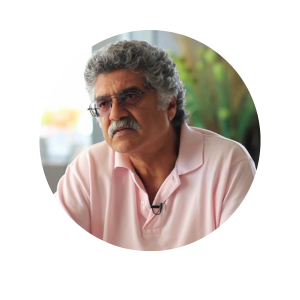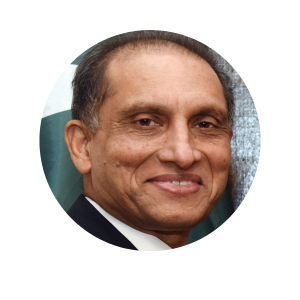FLASHPOINT
The Fall of Kabul: Why did the ANDSF go into meltdown?
Date: August 17, 2021
As Kabul fell to the Taliban in a spectacular series of uncontested battlefield victories, there were questions raised on how the ANDSF, perceived as a credible fighting force by its trainers, swiftly capitulated in an alarming manner. Stationed outside Kabul, the Taliban made their demands known to President Ashraf Ghani’s government, and waited as the President flew out with other members of the Kabul elite.
Kabul fell without resistance, as did all major provincial centres, marking the end of the Afghan government as well as the ANDSF as a fighting force.
That the ANDSF would all but disappear within weeks since the fighting began in earnest, was also not anticipated. A force that was built over 20 years with billions of dollars in training and equipment refused to fight the Taliban. What was the morale of ANDSF soldiers and why were they the sole defenders of Afghanistan? What explains the meltdown of the ANDSF? We ask the experts.
Maleeha Lodhi
Pakistan’s Former Permanent Representative to the UN

In any conflict political will is more or as important as military training and weaponry. Once the ANSF saw that their patron and benefactor was leaving, and their leadership was mired in corruption with little if any public support, government soldiers had no will or motivation to fight. The ANSF’s meltdown was inevitable when soldiers found there was no reason to fight any more and that fighting in any case would have been in vain. Desertions in any case had long afflicted the Afghan army while morale further plunged with the US departure and the decisive momentum achieved by the Taliban juggernaut.
An important underlying factor was the people’s yearning for peace. We often underestimate the role of public opinion. This too may have shaped the response of ANSF personnel as they saw how war weary people were after having experienced four decades of conflict, strife and foreign interventions. Like ordinary Afghans soldiers too did not want to see or engage in more bloodshed. This also explains why predictions of a civil war breaking out did not materialise.
Zamir Akram
Pakistan’s Former Permanent Representative to the UN

Several shortcomings on part of the US contributed to the swift fall of the ANDSF. First, the US made a mistake by not distinguishing between Al Qaeda and the Afghan Taliban. Pakistan had maintained from the very start that while Al Qaeda could be militarily eliminated because they lacked a base in Afghanistan, the same was not true for the Afghan Taliban who enjoyed considerable local support among the Pashtun population of Afghanistan. This is why there was never a military solution when it came to dealing with the Taliban as they could not be eliminated completely. Second, the US was at fault for conducting aerial attacks indiscriminately which resulted in civilian casualties and evoked feelings of resentment against the Kabul government. Another factor that enabled the re-emergence of the Taliban is the fact that soon after Afghanistan was invaded in 2001, the US soon shifted its focus towards Iraq.
The expenditure incurred on the ANDSF essentially went to waste because the Army and the Police felt that they had no real stake in the government. When the critical moment arrived, the Afghan army was suffering from a lack of morale as they believed that there was no objective worth fighting for. The US clearly overestimated the capability of the ANDSF while underestimating the Taliban’s military prowess. General Kiyani had warned much earlier that there is little point in spending large sums on training the military as in the end a political solution will have to be sought.
Aizaz Chaudhry
Pakistan’s Former Ambassador to US

The US invested heavily on an army that was not motivated enough to fight fiercely. The Afghan government too was hardly inspiring them to give their best. Yet, after so much of US investment in that army, it’s sudden collapse was a huge surprise. We had been reading many reports by SIGAR, Special Inspector General for Afghan Reconstruction, the Congress Mandated body in the US, which consistently highlighted the issues of corruption, desertions, green-on-blue attacks, green-on-green attacks, but these warning indicators were not heeded to, resulting in the US and the rest of the world being totally surprised at the sudden collapse of the Afghan Army.
The leadership of Afghan President Ashraf Ghani did not inspire the Afghan army to fight for their nation. Rather, Ghani spent all his time bashing Pakistan and focusing his energies on shifting the blame to Pakistan, instead of addressing the constraints and shortcomings of his army, or exhorting them and explaining to them the larger purpose of lasting peace in Afghanistan.
The international expectations from the ANSF to uphold order were justified, given the huge sums of money spent on their training and equipment. However, it is also an established fact that armies do not work only on equipment, but on the will to fight. The Afghan leadership did not guide them properly and kept using them for a very narrow objective of creating difficulties for Pakistan out of misplaced belief, rooted in the fallacy that it was Pakistan which was leading the charge and supporting the Taliban.
Zahid Hussain
Senior Journalist

When evaluating the reasons for the meltdown of the ANDSF, it is important to remember that this army was raised from scratch. The US took interest in building a military force around 2010 during President Obama’s first term. Prior to that, the concept of ANDSF did not exist. The lesson here is that an army cannot be raised overnight. Another contributing factor was the lack of professionalism within the ANDSF and corrupt leadership. There was simply no motivation to fight because the troops hardly trusted the leadership in Kabul, which itself was divided and could not lead a nation in war. The Ghani government was never truly representative of the will of the people. While all of the above factors contributed to the overwhelming success of the Taliban, the lack of resistance and complete surrender on display was still surprising to witness.
It is also important to note that there were frequent changes in the command of the Army under President Ghani, which was also a demoralizing factor. One can also not discount the impact of rampant corruption. The US had claimed that the ANDSF had 300,000 troops, however in reality there were only 150,000 troops who hardly trained and a lot of money for training and salaries was being siphoned off. At the end of the day, who are the troops fighting for? The defection rate within the ANDSF was around 10 percent during the past year, so how can such an army put up a fight?
Expectations were not exactly misplaced on the ANDSF from the international community considering the large sums which were spent on their training. Even the US was not expecting this outcome and they were assured by President Ghani that the troops could fight and resist. Despite concerns surrounding the lack of professionalism, such a meltdown was entirely unexpected.
